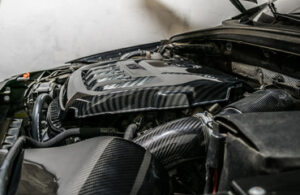Keep Your Jeep Running Smoothly With Genuine Jeep Parts
Jeep vehicles thrived long before the SUV craze and are renowned for their sure performance and serious endurance. Keep your Jeep Parts looking, feeling, and performing at their best with genuine OEM parts.
Keep your Jeep clean with a set of all-weather floor mats. Choose a set with deep ribs to catch and trap dirt and debris.
The 2022 Jeep battery is the powerhouse that brings electricity to your vehicle’s components, including accessories and lighting. It also helps to start your engine and crank the alternator to recharge.
While a battery can last up to 3–4 years before needing replacement, a key indicator of a dying or failing battery may be sluggish starting. If you have noticed this issue, bring your Jeep into our service center for a battery inspection. This can reveal whether a problem with the wiring or terminals is the culprit. Our experts can then help you select a new battery that fits your driving habits and works within your Jeep’s specifications. When selecting a battery, consider its age and Cold Cranking Amps (CCA) rating. These are important factors for determining how powerful your Jeep will be when it needs to start in freezing temperatures.
Many Jeeps use a dual battery system that helps distribute the power load more evenly between driving functions and accessories. This ensures that your Jeep can operate as intended and prevents one battery from zapping all its energy, requiring a replacement or recharge. However, this isn’t an absolute necessity for all drivers.
Whether you are using your Jeep on off-road trails or to run errands around Lynwood, a healthy battery is essential. Keeping your Jeep battery in good shape can save you time and money, and it can prevent an expensive repair bill down the road. The experts at Kahlo Chrysler Dodge Jeep Ram can inspect your battery, clean the terminals, and replace it if needed.
Explore the full line of electrified vehicles with 4xe technology and discover the incredible performance and capabilities that come from pairing a traditional gas-powered engine with an electric motor. Whether traversing rough terrain or buzzing city streets, our electrification options heighten nearly every aspect of Jeep brand performance.
Alternator
Many people assume that their car’s battery powers all of the lights, windshield wipers, and other accessories while the engine is running. But this is a big mistake. Your battery only provides power to start the vehicle. Once the engine is running, the alternator takes over and creates electrical energy to charge the battery and power the electrical accessories.
An alternator is a large, circular metal component that is mounted on the front of your engine. It’s driven by a serpentine belt (the same belt that runs the air conditioning compressor and water pump), which turns the rotating parts inside of it to generate electricity. When the alternator fails, it can’t charge your battery, and your accessories may begin to malfunction.
A failing alternator can be difficult to detect, but it’s important to listen for any warning signs. A common symptom is dim or flickering headlights, although this could also indicate a faulty battery or a loose serpentine belt. Other possible symptoms include a battery warning light on your dashboard, difficulty starting the engine or stalling, growling or whining noises, and a burning smell.
Keeping your alternator well maintained is the best way to prolong its life and avoid costly repairs. Ensure that the belt is secure and that there are no cracks or holes in the face plate. Keep the alternator in a cool, dry place, and avoid washing it with detergents or cleaning products.
If you’re worried that your alternator is starting to fail, you should take your Jeep to a qualified mechanic right away. A reputable shop will be able to diagnose the problem with your charging system using a scan tool and can replace it quickly and easily using genuine Chrysler, Dodge, Ram, or Jeep components. Visiting an alternator specialist before the problem gets worse will save you time and money in the long run. Contact Gurnee Chrysler Jeep Dodge RAM in Gurnee to schedule your appointment today. We use OEM Jeep parts and are proud to offer a quick and easy experience for all our customers.
A/C Compressor
The compressor is the heart of the air conditioning system. It’s responsible for starting the refrigeration cycle by pressurizing refrigerant and converting it to high-temperature gas. Then it moves to the condenser to reduce temperature and pressure before moving on to the evaporator for cooling. If you don’t have a working compressor, your A/C won’t work. Like all mechanical parts, your compressor can wear out and need replacement. The signs that it’s worn out include clunking noises, odd smells, and low refrigerant levels.
Like most vehicle components, your compressor needs regular use to stay lubricated. If it sits for a long period of time, it can experience wear and tear. The best way to avoid this is by using your A/C every 30 days between late fall and early spring. You can also check your cabin air filter for obstructions to ensure that your vents are properly dispensing cold air.
Typically, your A/C compressor is driven by a pulley and V-belt. When you activate your A/C, an electromagnetic clutch triggers the swash plate that oscillates six double-ended pistons. Each piston creates a thin mist of oil that circulates and lubricates the internal components. As it’s doing this, the A/C compressor also pumps in air to keep it cool.
A faulty compressor may not pump in enough air, creating a vacuum that prevents it from reaching the evaporator with enough pressure. If this happens, it’s likely that the expansion valve or orifice tube (depending on your car model) is clogged with debris. A clogged expansion or orifice tube could also mean that the evaporator is leaking too much refrigerant.
The expansion or orifice tube gauges the heat and pressure levels of the refrigerant as it exits the condenser. It then regulates the amount of refrigerant that flows into the evaporator to maintain proper pressure. It’s also a good idea to replace the expansion or orifice tube once it’s worn out. The expansion or orifice tubes are usually located near the compressor, so replacing them together is relatively easy and cost-effective. You can also swap out just the expansion or orifice tube, but it’s much more complex and requires specialized tools.
Fuel Pump
The fuel pump is your vehicle’s unsung hero. It takes gas from the tank and delivers it to your engine so that your car, truck, or SUV can run. Your fuel pump should last the life of your vehicle under normal conditions, but it can wear out as a result of contamination inside the tank (dirt or rust), overheating because you regularly drive with low fuel levels, and other factors. If your fuel pump goes bad, it will need to be replaced.
The first symptom of a failing fuel pump is having a hard time starting your vehicle. The fuel pump is responsible for sending a signal to the ignition when your gas tank has enough fuel, so when it stops working, it’s impossible to start the engine. This is a common problem for older vehicles that have been subjected to corrosive fuels, especially when they are not cleaned frequently or correctly.
Another sign that your fuel pump has stopped working is the inability to maintain a steady flow of gasoline from the tank to the engine. This problem is more likely to occur with electric pumps, but it can also be caused by other issues such as a bad relay or fuse, a clogged fuel filter, and more.
Once your engine starts running, the fuel pump continues to supply your motor with a consistent flow of gas. If the fuel pump starts to wear out, however, it will become difficult to deliver the proper amount of fuel to your motor, which can cause your vehicle to stall.
Fortunately, replacing the fuel pump in your Jeep is relatively simple if it hasn’t already worn out. Your mechanic can usually get to the fuel pump by removing an access panel in the passenger compartment or, in the case of older cars, dropping the tank and removing all fuel supply hoses from their fuel pump connections. Once the pump is out, your mechanic can replace it with a new one and install all the necessary fuel hoses. Afterward, they will refill your fuel tank and test the new fuel pump for proper operation.





